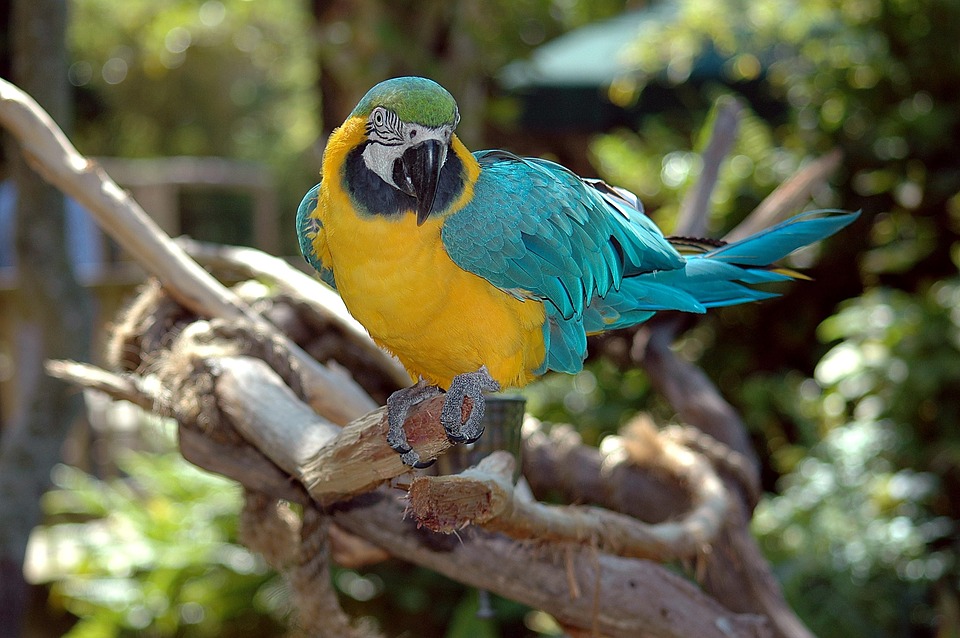Introduction:
Introducing parrots to new experiences can be a daunting task, as these highly intelligent creatures can sometimes exhibit fear or anxiety when faced with unfamiliar situations. However, with the right approach and the use of positive reinforcement techniques, you can help your parrot overcome these hurdles and thrive in a world full of novel experiences. In this article, we will delve into the concept of positive reinforcement and explore how it can be effectively applied to introduce parrots to new situations.
I. Understanding Positive Reinforcement and Its Benefits:
Positive reinforcement is a powerful behavior modification technique that involves rewarding desired behaviors to encourage their repetition. By associating a positive experience or reward with a specific behavior, parrots are more likely to engage in that behavior in the future. When used correctly, positive reinforcement can help parrots overcome fear, build trust, and foster a positive attitude towards novel experiences.
II. Step-by-Step Guide: Introducing Parrots to Novel Experiences:
1. Assess your parrot’s comfort levels:
– Observe your parrot’s body language and responses to determine their comfort level with new experiences.
– Start with small, non-threatening activities to gauge their reaction and establish a baseline for progress.
2. Create a positive and safe environment:
– Ensure the surroundings are calm, quiet, and free from potential stressors.
– Provide a comfortable space with familiar toys, perches, and food/water sources to establish a sense of security.
3. Gradual exposure to new experiences:
– Start with low-intensity stimuli, such as introducing a new toy or rearranging their enclosure slightly.
– Gradually increase the complexity and intensity of the experiences while closely monitoring your parrot’s response.
4. Utilize positive reinforcement techniques:
– Reward desirable behaviors, such as curiosity or exploration, with treats, praise, or their favorite toys.
– Associate positive experiences with the new stimuli to create positive associations and reduce fear.
5. Patience and consistency:
– Allow your parrot to progress at their own pace, avoiding overwhelming experiences.
– Consistency is key – ensure each positive behavior is consistently rewarded to reinforce the learning process.
III. FAQs:
1. How long does it take to see progress when using positive reinforcement?
– The timeline varies depending on the individual parrot and their previous experiences. It can take weeks or even months to see significant progress. Patience and consistency are essential.
2. What if my parrot becomes frightened during the introduction process?
– If your parrot displays signs of fear or distress, immediately remove them from the situation and provide reassurance. Revisit the exposure with a more gradual approach and adjust accordingly.
3. Can positive reinforcement be used for all parrot species?
– Yes, positive reinforcement techniques can be applied to all parrot species. However, it is crucial to understand each species’ specific needs and preferences to tailor the approach accordingly.
4. Are there any potential risks associated with positive reinforcement training?
– When used correctly, positive reinforcement poses no significant risks. However, it is crucial to avoid over-rewarding or reinforcing undesirable behaviors inadvertently. Seek guidance from a professional if needed.
Conclusion:
Using positive reinforcement to introduce parrots to novel experiences is an effective and humane approach to help them overcome fear and develop a positive attitude towards the unknown. By creating a safe and supportive environment, gradually exposing them to new stimuli, and consistently rewarding desirable behaviors, you can help your parrot thrive in a world full of exciting experiences. Remember, patience, understanding, and a deep bond with your feathered friend are the keys to success.









